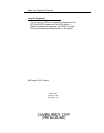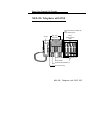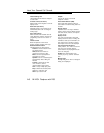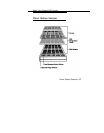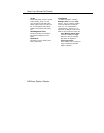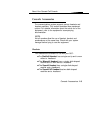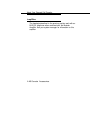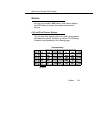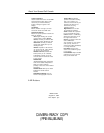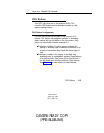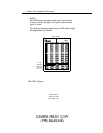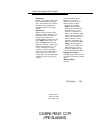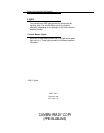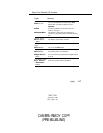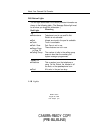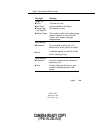
About Your Queued Call Console
Letters G through Z
Letters located on the corner of each Call
and fixed feature button used to enter
names into your Personal Directory.
(Letters A through F appear on the
display.)
Call buttons
Buttons, labeled 1 through 5, to make
and receive inside and outside calls.
Fixed feature buttons
Buttons for special operator functions and
basic call handling:
Start begins directing the call and
puts the caller on hold at Source.
Source, connects you with the caller
after you’ve begun directing the call.
Destination connects you with the
person being called (when you are
directing the call).
Release completes a call and frees
you for the next call. It also releases
you from a 3-way conference.
Headset Auto Ans (Headset Auto
Answer) when you use a headset,
automatically connects you to the
next call each time anew call arrives
at your console.
Headset Mute
(Headset/Handset Mute) temporarily
turns off the headset microphone to
allow you to talk to someone
privately. It also turns off the handset
microphone.
Headset Status allows you to switch
between the handset and the
headset.
Send/Remove Message turns co-
workers’ message lights on and off.
1-12 Buttons
DRAFT COPY
August 27, 1992
File: chap01 .qcc
Position Busy temporarily
prevents most calls from being
sent to your console. You
continue to receive calls to your
extension and calls from co-
workers who are using
forwarding features.
Night Service turns on after-
hours telephone operation.
Alarm indicates that a problem
has occurred with the system.
Cancel cancels a call-directing
attempt and reconnects you to
the original caller held at
Source. The system moves the
call to a Call button.
Join connects you, the original
caller (source), and the co-
worker being called (destination)
in a 3-way conference.
Pool Status shows you the
status of the outside line groups
in your system.
Forced Release drops all callers
(including you) from a call and
frees you for another call.
CAMERA-READY COPY
(PRE-BLUELINE)



